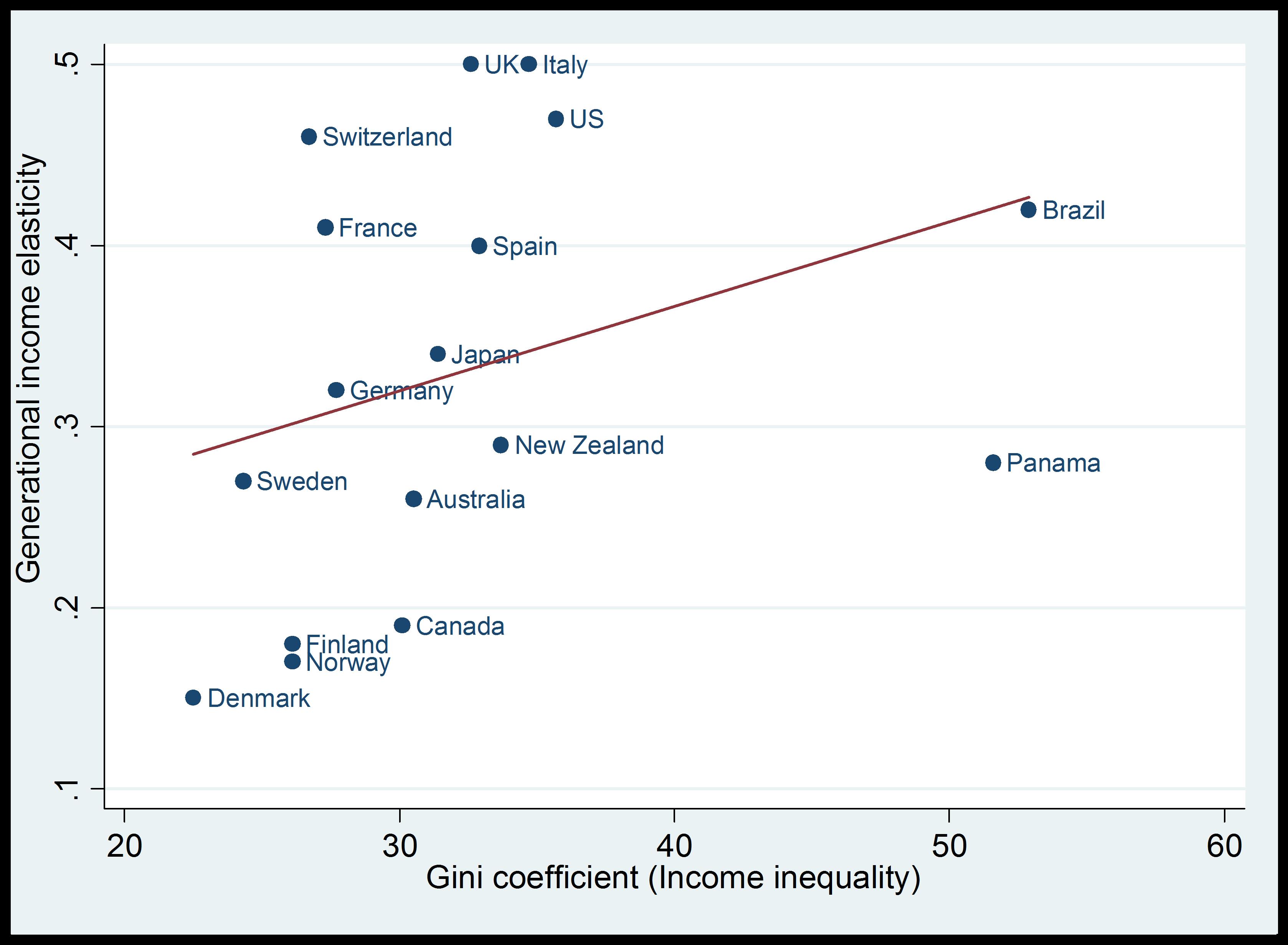
A more equal income distribution is an important pre-condition for increasing the well-being of the population and, indirectly, economic development. Equalizing life opportunities across individuals and generations is an important anti-poverty and growth-enhancing policy, especially in Latin America, an area where social mobility is traditionally extremely low.
By looking at the intergenerational transfer of social status, here meant as the relationship between the socio-economic status of parents and the socio-economic consequences for their children when the latter reach adulthood, it is possible to see the extent to which a country is generating incentives for people to invest in their own human capital. This relationship can be measured by looking at various variables, such as incomes, earnings, expenditure, borrowing facilities, educational status, health status, social class, social status, and occupation. The results are generally similar.
In two Latin American economies (Panama and Brazil) social mobility is very low. Our assessment is based on a rich and detailed data set. The data bank allows controlling for a number of variables: family size, literacy level of fathers, and rural/urban location. Our estimates for intergenerational income transfer are 0.42 for Brazil and 0.28 for Panama, both indicating low intergenerational mobility. These coefficients suggest that inequality is very high and should be addressed properly by policymakers.
In the Latin American context, intergenerational mobility is important since these economies are subject to stagnant development rates; moreover, inequality has further increased in the last decade, and extreme poverty is widespread. In the figure above, we reproduce the Great Gatsby curve—produced originally by Alan Krueger—to measure the correlation between economic inequality, measured by the Gini coefficient, and intergenerational income elasticity. The curve shows the strong correlation between these two variables and, at the same time, the position of Brazil and Panama in the right upper corner of the figure. This confirms that both countries have a higher than average level of inequality and, at the same time, a low level of social mobility. Panama has more inequality than it has low social mobility, but also lies toward the right side of the figure.
It is likely that without removing the factors that produce the need for large intergenerational income transfers, the degree of income mobility will remain unsatisfactory and economic growth will remain lower than its potential. Economic policies should be aimed at removing the obstacles that hinder access to further education for children, which condemn them to a poverty trap.
It is important to increase the degree of intergenerational mobility, because this will reduce income inequality and, indirectly, stimulate economic growth in the Latin American area, where income inequality is a constraint.
© Ömer Tuğsal Doruk, Francesco Pastore, and Hasan Bilgehan Yavuz
Francesco Pastore’s IZA World of Labor article “Why is youth unemployment so high and different across countries?” is available here.
Figure. The Great Gatsby curve
Source: Adapted from Corak, M. “Income inequality, equality of opportunity, and intergenerational mobility.” Journal of Economic Perspectives 27:3 (2013): 79?102.
Please note:
We recognize that IZA World of Labor articles may prompt discussion and possibly controversy. Opinion pieces, such as the one above, capture ideas and debates concisely, and anchor them with real-world examples. Opinions stated here do not necessarily reflect those of the IZA.